Hey everyone thanks for taking the time to read this blog post, now you’re probably thinking. OH MY GOSH, there are 7,137 WORDS IN THIS BLOG POST! This is too much for me to scramble through and find what I want!!!
WAIT! Before you go, I have an easy solution to your problem, instead of trying to scroll through this entire blog post, you can simply search for what you want. Here’s how it’s done.
I want you to press these 2 keys on your keyboard “CTRL” and THEN PRESS “F”
OR
If you are on Google Chrome, you can do this…
Now you can type the specific word that you are looking for, cool right?
I just saved you a tonne of time, so please share this blog post with others and we will call it even, sound good 🙂
Now I am new to Bitcoin, so please don’t get too angry at me if I missed something, or made a little mistake, I was introduced to this awesome industry by a great guy called Paul Democritou, who said ”Right now Bitcoin is still a rather small niche but has a lot of growth potential”, so I’m going to give it my best shot!
DISCLAIMER: I am not an expert (…Yet) I am a beginner just like you, however, the great thing about this, is that we can learn, grow and become stronger together. : )
However, one thing that I found difficult is that all the information is scattered around, so I have given a helping hand and collected all the Bitcoin terms and phrases into a MEGA Bitcoin glossary.
Address:

No, I’m not talking about Amazon delivering a parcel to your house! However, it does have a similar function, an address is a destination the user will tell the Bitcoin to go to, for example, someone else’s Bitcoin wallet, this address consists of a long series of letters and numbers.
Here is an example of a cryptocurrency address
1PTGqUbEARo75LUbCWjAHp7WC9cnhqYNNP
Altcoin:
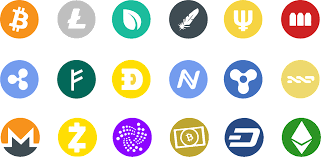
As it has in the name an Altcoin is a digital currency that is different from Bitcoin. Fun Fact: There are over 5,000 Altcoins in the world (At the time of making this blog post) A good way to think of Altcoins is that they are an alternative asset, which means they follow a different set of rules than Bitcoin.
Arbitrage:
In crypto, arbitrage refers to taking advantage of the price difference between two different exchanges. If Bitcoin is selling for £8,950 on one exchange and £9,000 on another, a trader can buy the digital currency on the first exchange and sell it on the second for a profit.
Bear or Bearish:

Ahhh that’s so cute! Oh sorry, I got distracted… So, what is a bear?
Well, this is more of a state of mind, people who are “Bears” believe that an asset (Of any sort) will go down in value. Most traders will then take a short position on the chosen asset, which means they will make a wager that will pay off if the asset falls in value.
Blocks:
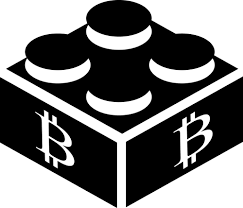
All digital currencies make use of blocks, which contain transactions that have been confirmed, they are then collected and combined.
Errr? In English please Adventago alright. Think of blocks as files where data is coming through to the Bitcoin network and is then permanently recorded.
A great way to think of this is when you get your bank statement, A block records some or all of the most recent Bitcoin transactions that have not yet entered any prior blocks. Thus, a block is like a page of a ledger or record book.
Blockchain:

A blockchain is a shared ledger system that holds multiple blocks, these blocks contain verified transactions, a great advantage for blockchains is that they were designed to be decentralized and unchangeable.
Why is that a good thing?
The main reason this is game-changing is that for the first time, it has taken the dispersing power away from a single body, for example, the government, this means that one person cannot control the flow of how much Bitcoin is allowed to go into the world or add more if they please.
And second, the reason why having blockchain immutable means that it’s impossible for a single person, for example, the government or company to manipulate, replace, or fake data that is stored in the blockchain network.
A lot of people say that this is bringing the power back into the hands of the people.
Bull or Bullish:

This is similar to the bear in the way that it’s more of a state of mind, this term is used when a trader believes that an asset will go up in value.
For example, when people saw Bitcoin rise in crazy prices people were getting extremely excited and started buying like crazy in the hopes that it would rise to greater heights, this type of mindset would be classed as “Bullish”.
Consensus:
In simple terms think of this as a general agreement between 2 people.
In the Bitcoin network, this is when the network nodes agree that a transaction took place. This agreement (Or if you want to call it a transaction) is especially important if the different networks are to have the same information.
The reason this is important is that it acts as a fault-tolerant system that is used to make sure that every new block that is added to the system is the only version of the truth that is agreed upon.
Cryptocurrency:

Cryptocurrency is a digital asset designed to work as a form of exchange.
For example, when you give the cashier at Starbucks $10 you are technically saying “I will trade you this thing of worth, for your thing of worth.”
This is exactly what Bitcoin is doing, however, instead of paper it’s numbers on a computer (Digitally) just like a credit card.
However, I have heard that there are such things as physical bitcoins (This one is called Casascius).
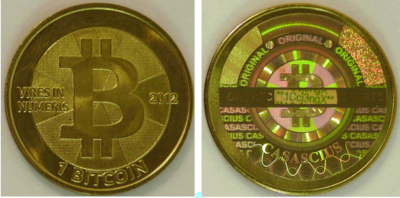
The Casascius was created by a man in Utah called Mike Caldwell, the coins were made of brass with gold electroplating on the 25 Bitcoin denomination.
Unfortunately, they were banned by the US Financial Crimes Enforcement Network (FinCEN) because they classified his activities as ‘money transmitting’ and Caldwell was forced to start selling empty coins.
A while into the future and Casascius had resumed sales and had listed three coins, along with a gold-plated savings bar. However, none of them are priced and it is unclear whether Casascius simply ran out of stock or stopped selling them directly altogether.
Cryptography:

This is the process of encrypting and decrypting information, so people who are unauthorized to see what is going on are unable to intercept and understand where the information is being sent or going.
DDoS:
Also, known as a distributed denial-of-service, this is when a group of computers works together to overflow a system by pretending to be genuine people that are requesting a service of information from the system.
A great example of this would be a bus, let’s pretend you want to take the 279 bus, and you see other people on it, normally what happens is that a certain amount of people come on and a certain amount of people come off.
So, there is always a constant flow, and everyone can utilize the bus, however, in a DDoS. Let’s say a bunch of people who have no use for the bus start coming on it, and never get off.
This is exactly what a DDoS does, the main goal of DDoS is to overwhelm a service with fake people to the point that it blocks real people from accessing the service. Some Bitcoin companies and other cryptocurrency services have faced DDoS attacks.
The reason for this is so the attackers can destroy or damage a marketplace enough so they can swoop in and steal cryptocurrency. It can also be done to destroy a company’s reputation since people are going to feel skeptical about going to a Bitcoin platform that has been compromised in the past.
Distributed Ledger:
This is a system that is made to record information that has been spread across different devices, for example, the blockchain was designed to keep track of all the sharing of Bitcoins.
Escrow:
If you are familiar with Silk Road, Dream Market, Empire Market (And others), you may know before you get the goods you have bought with your Bitcoins, they will be held in escrow.
The reason for this is to make sure that the transaction goes to plan, and that the other person holds their end of the bargain.
You can think of this as a separate person who is holding your Bitcoins to make sure the other person doesn’t receive their Bitcoins and run off without giving you what was promised.
Flat currencies:
These are currencies that are made and controlled by an entity, for example, the Royal Mint in the UK, the only reason these currencies have value is because the government has enforced people to perceive them as valuable.
Exchanges:
Think of exchanges as a busy marketplace where everyone is shouting and trading goods.

In the realm of Crypto, these are places where you can trade Cryptocurrencies for example if a person wanted to give 0.000538 Bitcoin to someone they could do this by simply going to an exchange platform and requesting it to be sent. This is also a place where you can convert Fiat money into Cryptocurrency.
F.O.M.O:
This is used a lot in sales and marketing, it stands for “Fear of missing out”, this is an emotion used when you are scared that if you don’t act now on something, you may never see it again.
The reason this is so powerful is that it prevents procrastination which is a huge killer when it comes to sales, it also destroys rational thinking, since there is no time to plan, you can see this a lot in stores where they will say “Only 5 left” or on landing pages, where they may have a timer like this one.
This can be extremely dangerous, because it prevents the person from making calculated decisions, especially when it comes to investing, you want to be thinking with proven data, not with your emotions.

This relates to when bitcoin was rising at crazy prices, no one wanted to miss out on this “Life-changing opportunity”, so people went over the top and started buying like crazy, with money they weren’t comfortable losing, some people even used leverage so they could buy more Bitcoin with money they didn’t even have!
Will there be times in your life that are 1 in a 1,000,000? Of course, however, this does not mean that new occasions will never rise again, believe me, there is always another wave you can surf.
So please don’t get caught up in the hype and be careful, if someone is promising you a “Once in a lifetime opportunity to get rich overnight” It’s probably a red flag.
Oh and by the way, some of you Bitcoin investors probably know that this landing page with Richard Branson is a scam if you aren’t aware of this, then please watch the video from Richard Branson and the Virgin team.
Fork:
What the fork is a fork! Do you mean this… No, I don’t mean a kitchen fork.

A fork is a change of rules or protocols in digital currency. Developers do this a few times to update their Cryptocurrency. There are 2 different types of fork, a soft fork, and a hard fork.
Also, a fork is when a Cryptocurrency with open-source coding allows teams to create their own version of the same coin, an example of this would be Bitcoin Cash which is a fork of Bitcoin.
Hard Fork:
A hard fork is when a permanent change in digital currency occurs, when this happens the entire blockchain will no longer accept any blocks that were mined before the rules occurred.
Soft fork:
A soft fork is a change to the software protocol where only the previous valid blocks (Transactions) are made invalid since old nodes will recognize the new blocks as valid, a soft fork is backward-compatible.
FUD:
This is similar to F.O.M.O since it’s about the investor’s emotions, FUD means Fear, Uncertainty, and Doubt, the idea around this is that people may spread and gossip misleading and false information about a certain asset to decline the price of the asset.
Someone who wants to invest may do this so an asset price falls, so they can successfully hit their short order, or buy at a lower price and make a gain once the asset goes back up.
HODL:

This term was invented by Cryptocurrency investors it stands for “Hold on for dear life” This phrase originally came from a misspelling of the word “Hold” since Cryptocurrency can be extremely volatile and can experience significant fluctuations some people say you should HODL.
Initial Coin Offering also known as (ICO)
This represents the first time an organization offers Cryptocurrency to the masses, the goal is to raise money, then the companies hold these offerings so they can finance projects.
An example of this is when a company first opens to sell its shares to the public, however, these are called IPOs (Also known as initial public offerings).
In simple words, think of this as a Kickstarter. It lets you buy the Cryptocurrency before it officially hits the market, people do this in hopes that the Cryptocurrency will be worth something in the future, or they simply believe in the project.
KYC:
This means “Know your customer” This is the regulation that start-ups must comply with by revealing and verifying the identity of the investors who are holding the ICOs.
Long Position/Long:
Taking a long position means that you are making a bet that an asset will rise in value. If a trader buys a Bitcoin in this manner, they do not own the Bitcoin they are simply betting on the fact that the Bitcoin will appreciate.
Market cap:
This is a short term for the word Market Capitalisation which is a term for total market value. The market cap of Bitcoin, for example, is the number of BTC outstanding multiplied by the digital currency’s price. The term can also be used to refer to a group of digital currencies.
Mining:
No not that kind of mining.

I mean this kind of mining.
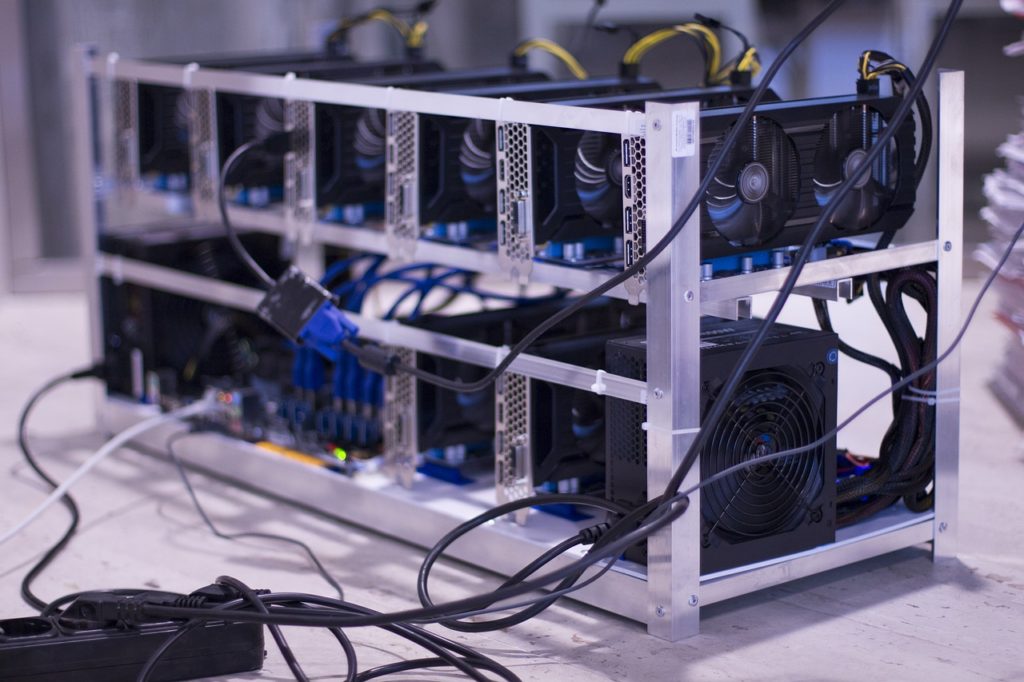
Mining is the process of creating a digital currency, for example, people would mine Bitcoin and release new Bitcoins into the Bitcoin network, every time a block was mined. Mining involves confirming and combining them into blocks.
This verification requires hardware and electricity, and miners are rewarded with digital tokens for contributing these needed resources.
Mining Incentive:
As the name implies it’s the bribe (Or incentive) for a miner to keep on mining, so they can be rewarded with BTC, the reason why there needs to be an incentive to keep people mining is due to how much electricity and hardware is needed.
And obviously, those things don’t come cheap, so to show the miners that their work and energy are appreciated they are compensated with BTC.
A simple example would be to think of Crypto mining as a normal 9 to 5 job, you put in the time, effort, and you get a paycheque in return, however, instead of a cheque, you get Bitcoins.
Moon or Mooning:

What mooning means is that a Cryptocurrency is going high in value, in an extremely short period of time, for example when people saw Bitcoin skyrocket in price, Cryptocurrency investors would say “Wow Bitcoin going to the moon!”
NOOB:
Just like you would shout into your microphone when you kill someone in Call Of Duty. A noob is someone new to an industry and doesn’t know anything about it, however, unlike Call of Duty, where you would jump in regardless of knowledge and get killed every time, you respawn.
I DO NOT RECOMMEND you have the same mentality with investing, in general, there is no respawn button when it comes to losing your money especially since Cryptocurrency is extremely volatile.
I would urge you to educate yourself on the industry then get yourself a “Demo account” and invest there. After you are more comfortable with Cryptocurrency you can dive into the real thing and no longer be a noob.
However, I want to let you know there are no ranks when it comes to investing, and don’t let anyone tell you otherwise, even the great Warren Buffet still has a “Student like mentality”.
So I recommend you always stay learning even if you feel like you know everything, I urge you to keep your ego aside and continue to invest in yourself, it’s the best asset you have.
A great guy I would recommend learning from is Paul Democritou he opened my eyes to Bitcoin, so if you want to discover more about him, and the great books he has written on Bitcoin you can give him a look HERE.
The great thing is that we are learning together, so we can both become Bitcoin whiz kids before you know it. Who knows maybe sooner or later we will both be on the news talking about how we become Bitcoin millionaires, only time will tell 🙂
P.O.W (Proof of Work):
This stands for ‘Proof of work” This is a system of proving that a digital currency’s transactions have been verified. Many Cryptocurrencies use P.O.W under such a system, miners must do “Work” which is difficult for them to contribute, but easy for the broader network to verify.
P.O.S (Proof of stake):
This stands for “Proof of stake” which is also a method for validating block transactions, this is according to how many coins a person holds, this would mean that the more Bitcoin or other Cryptocurrencies a person has the more mining power that person has.
In these cases, users who confirm transactions are sometimes referred to as “Forgers,” that receive transaction fees for their contributions.
Private key:

A private key is a piece of code that has a string of numbers and letters inside of it. This is used to make sure that the right person can access their Cryptocurrencies. Think of this as a password for your phone.
A private key for Bitcoins or any Cryptocurrencies must always remain secret. If you were to reveal the private key of your wallet to someone else, then you would be giving them access to all the coins that are secured by the key.
It is also important, that you back up the private key in the same way that you would back up a passphrase. If you lose the private key and the seed to recover your wallet, the Cryptocurrencies you own are gone forever.
Public key:

A public key is an address that a user gives to others so they can receive Bitcoin or other cryptocurrencies, this has the same relationship that private keys have, due to that they both have strings of encrypted data that have numbers and letters.
Pump and Dump:
This is a type of investment scam where a person or team of people will work together to inflate the price of an asset, so they can sell it when the value is artificially high.
This method may be particularly pervasive when it comes to digital currencies, as traders can easily get together using Telegram groups with the goal of causing specific cryptocurrencies to rise sharply in value.
REKT!!!
This slang term is used when a trader loses a large amount of money.
R.O.I:
This is what every investor cares about, this means Return on investment. When an investor puts their money into something, they are hoping to get more than what they initially put in.
Satoshi Nakamoto:

Satoshi Nakamoto is the fake name for the creator of Bitcoin, there have been multiple people who have claimed to be Nakamoto, however, no one has been able to convince the Cryptocurrency world that they are the true creator of Bitcoin.
It is also said that Satoshi Nakamoto devised the first blockchain database.
Shorting also known as short:
This is when an investor will make the bet that an investment will fall in value. There are a few methods that traders can use to short digital currencies, including futures, options, and margin trading.
Token:
A token constitutes a unit of value issued by an organization. A token requires another platform such as Ethereum to exist and operate examples of these are Augur, Golem, and Omisego.
If you are not operating on your own blockchain this is enough to be considered a token in the Cryptocurrency community. Also, many tokens are backed by something, when you trade a token you are also trading what is being backed by the token.
Since you can record ownership of anything on the blockchain, you can make a token for the trade of anything, an example of this could be the tokenization of gold, a company could buy 1000 ounces of gold.
And create 1000 gold buttons, then you could sell those gold buttons to people for the price they choose, which would probably be similar to how much an ounce of gold would cost.
With the guarantee that 1 gold button is worth 1 ounce of gold, a person would only have to trade them 1 gold button to get an ounce of gold back this allows people to easily trade.
Without having to physically move the gold, then any person who wants to claim the gold can. By simply trading in the token. And all transactions with this token would have their fees paid with Ethereum and not the token itself.
However, tokens do not have to be backed by something, they can simply be the currency for a certain service or purpose this can be a lot of things, for example, a website that gives you a token to listen to music.
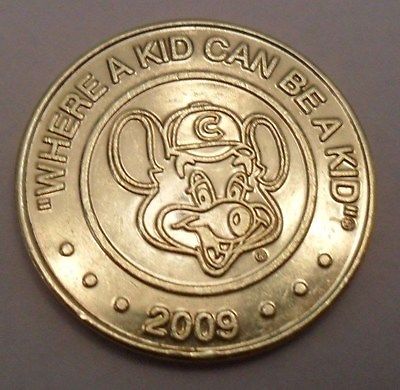
Think of this as an alternative to YouTube music, instead of paying a monthly fee you could buy a bunch of these tokens and cash them in, so you can listen to your favorite songs.
Also, I just want to point out, that the Ethereum network is not the only one that tokens utilize. There are several Cryptocurrency projects that operate networks similar to Ethereum.
Whale:
This is a term used to describe an investor who makes large bets, these types of people can make extremely large transactions, that could affect the market as a whole. Some people call this” Making waves in the ocean”.
White Paper:
The makers of the Cryptocurrency will usually have documentation that gives detailed information and explains what the Cryptocurrency is and its technology.
For example, the Bitcoin white paper provided information on a Peer-to-peer electronic cash system. Investors who are thinking of taking part in ICOs can benefit a lot from reviewing any available white papers on the subject.
Bitcoin:

Bitcoin is a digital currency that is not controlled by a central authority and was launched in 2009, by an unknown person or organization, under the fake name of Satoshi Nakamoto.
The mission of Bitcoin is to make a currency that does not rely on a central authority or government, this is a great advantage since it would include lower transaction costs, and countries that don’t have a simple banking system could still mingle with other people (For example Africa).
When Bitcoin launched the cost of 1 Bitcoin was only a few cents, and in late 2017 the price of Bitcoin went sky high to almost $20,000 however it did crash after a couple of months to around $7,000.
This huge spike is what got most investors interested in the potential for Bitcoin.
BTC:
Every Cryptocurrency has a 3 letter symbol, that makes it easy to spot when trading, this is the same thing with stocks, for example, instead of having to type in Bitcoin every time, you could call it by its short name BTC, and still get the results you were looking for.
Ethereum:

At the time of making this blog post, Ethereum is the 2nd largest cryptocurrency by market capitalization the goal of this project is to give access for programmers to create smart contracts, just like they would if they were writing simple software. It is also decentralized and open source.
Wallet:

Oops sorry, wrong wallet, however, a Cryptocurrency wallet is exactly like this, but instead of money and gift cards you hold Cryptocurrencies, (Also it’s a lot more secure than your normal wallet), It’s a software that allows you to store, send and receive Cryptocurrency.
Hot Wallet:
This is a type of Cryptocurrency wallet that is connected to the internet and can be accessed from the internet or an application, (Like an app on your phone). People rather this type of method because it’s convenient and you can instantly send and receive cryptocurrency. However, this type of method is less secure because hackers try to gain access to the website.
Cold Wallet:

This is a wallet that has no connection to the internet. And is stored on hardware, for example, a USB drive. These are less convenient than a hot wallet, however, they are safer, since if a hacker wanted to access your wallet, he/she would need to know the physical location.
Network confirmation:
Since Cryptocurrencies are not controlled by the government or a company, you could not rely on a single authority to validate a transaction. Thankfully, the Bitcoin network itself will confirm each transaction.
Each node will check each transaction and confirm or deny its legitimacy. The more confirmations a transaction has the higher chance that it is valid, at the time of making this blog there are 6 confirmations which means you have a 99% chance that your transaction is valid.
Node:
This is a computer that is connected to the internet and runs the software of a given Cryptocurrency. Nodes are in charge of validating transactions and packaging those transactions inside new blocks on the blockchain. In other words, it is the network of nodes that keeps a Cryptocurrency running.
Light Node:
It represents a computer running a light version of the Cryptocurrency software which offers a limited number of features, usually including payment verification.
Some Cryptocurrency projects allow light nodes to exist, to increase the total number of nodes available, possibly increasing the efficiency of the network and reducing the time to validate transactions.
Full node
A computer running the full software of a Cryptocurrency project, which includes all the transactions (and therefore all blocks) ever registered for this particular Cryptocurrency. Running a full node is the only possible way to verify transactions without relying on a third party.
Security token
This is a subcategory of tokens that usually represent real-life assets like company shares, real estate, and others. Security tokens are expected to make buying, selling, and trading those assets easier, even though they have more regulation than other Crypto projects.
Smart contract
This is a digital contract that runs automatically when it is completed. For example, you want to make a bet with a friend about whether the next YouTube Advert would be a man or a woman. You could use a smart contract for such a bet.
Both you and your friend would deposit the money into a temporary Bitcoin wallet, and the software itself would verify whether there was a man or a woman in the next YouTube ad.
The software would then transfer the money to the person who wins. As you can see, using a smart contract has some advantages, as it can give more security to both sides.
C.P.U:
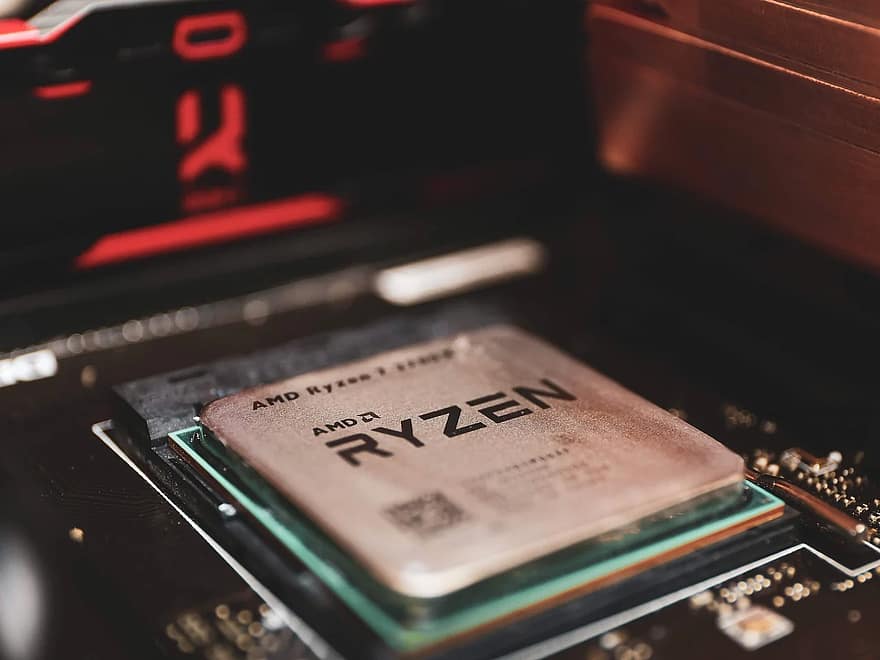
This stands for, computer processing unit. This is a component inside a computer that gives the computer the processing and thinking power to run. A while back people would use CPUs from their computers to mine Bitcoin.
G.P.U:

This stands for Graphical Processing Unit. This is used on computers to process graphics. Some cryptocurrency projects have algorithms that allow GPUs to be used in the mining process more efficiently than CPUs.
Stable Coin:
A Cryptocurrency that is backed by a fiat currency (For example the UK Pound) or a commodity (Like Silver). The idea behind stable coins is to provide security and liquidity for users who want to temporarily sell their Cryptocurrencies without removing their funds from the exchange.
Tether:

The largest stablecoin in the market with a market cap of over $2 billion.
Double spending:
This is a financial scam that is done by spending the same amount of money twice, in hopes that the second company will not realize, or be able to authorize that the payment has been spent elsewhere.
This type of scam has happened to smaller cryptocurrency companies, however, there is no evidence that this type of scam has happened to larger Cryptocurrencies like Ethereum or Bitcoin.
51% Attack:
Since Bitcoin and other cryptocurrencies do not have a main authority like a government or a company controlling them, it is up to the consensus of the network nodes that determine which transactions are valid and which are not.
However, if a person were to have at least 51% of control over a network node. The person could be able to validate their own fake transactions.
Thankfully, the larger number of nodes inside a network, means the harder this type of scam is to pull off, at the current time of making this blog, no large Cryptocurrencies have been affected.
All-time high/low:
This means the highest price point a Cryptocurrency has ever traded at.
All-time low:
This means the lowest price point a Cryptocurrency has ever traded at.
Bag Holder:

This is a state of mind when a person holds a large amount of a certain Cryptocurrency that has lost value over time, however, they still believe it will eventually go up in price, so they continue to hold on.
Burn:
This is the process of destroying tokens so they no longer exist or cannot be accessed. This decreases the total supply which can cause the price to increase if people are still in demand for it.
Sell and Buy wall
Sell and Buy walls are placed on Cryptocurrencies to keep the price at a certain point. A sell wall will stop the price from increasing, and a buy wall will stop the price from decreasing.
Circulating supply:
The amount of Cryptocurrency that is in circulation. This means the amount that is currently tradable on the market. This is not always the same as the total supply because of things such as mining and lock-up periods.
Max supply:
This means the maximum amount of a coin or token that can ever exist.
Confirmations:
These are the number of blocks in a blockchain that have been produced and accepted by the consensus network, since the creation of the block that includes the initial transactions.
Crypto:
This is just a short name for Cryptocurrency.
D.Y.O.R:
This stands for Do Your Own Research, people say this to encourage others to learn and educate themselves, instead of simply listening and following people’s advice blindly.
DAPP:
A decentralized application that is run on the blockchain. Dapps require multiple users to run, however, Dapps do not need third parties to stay active since they are open source.
(DLT) Distributed Ledger Technology:
This is a type of technology that allows a ledger to be shared globally, this means that many people around the world can contribute and keep the database running, a smart feature is that changes to the database can only be made if enough people agree.
Faucet:
This is a type of reward system, that was given to people who would complete small tasks, for example, helping to make and verify captchas, unfortunately, they are less common 🙁
Fiat:
This is money that is declared to have value by the government, but has no commodity backing it up, examples of this would be the UK Pound, Japanese Yen, US Dollar, and others, also how much in circulation can be controlled.
Flippening:
This means there is an expected shift in the cryptocurrency markets where Bitcoin is no longer the leader and the value of Altcoin is not based on Bitcoin.
Since the start of Cryptocurrency, Bitcoin has had the largest market cap and the prices of Altcoins have been derived from its value.
Hashing:
This is the use of math to turn an input into a cryptographic output. This allows messages to send no matter how long they are, and to be cut down into a cryptographic output so it can be stored on the blockchain.
Indicator:
These can be added to trading charts to give some knowledge and insight into the future movements of an asset.
Leverage:
This is when you can borrow money from the exchange, even if you do not have enough money in your fund, an example of this would be you have $100 but you borrow $132.
Lots of investors get excited when they see this because they can make bigger investments, however, the risk is higher.
Limit:
A limit order is used when you want to buy an asset at a set price.
Liquidity:
This means that the asset can be easily sold and bought without impacting the price of the asset.
Long:
This is the process of betting something will increase in price using leverage in margin trading.
Margin Trading:
Margin trading is a form of borrowing, that lets you leverage securities that you already own, to purchase additional securities, to protect your account from overdraft, or to access an easy line of credit.
Here is an example, let’s say you want to buy 1,000 shares of XYZ, at $10 per share, which would cost you $10,000, unfortunately, you only have $5000 available. With a margin account, you can use your $5000 in cash and borrow the other $5000 in margin so you can make your purchase.
Market maker:
This is a person who provides liquidity to a market by creating sell or buy orders.
Market Taker:
This is a person who accepts the price of an order, in the order book and settles their trade instantly by trading at this price.
No coiner:
This is a person who does not own any Cryptocurrency.
Paper Wallet:
This is an offline method of holding your Cryptocurrency on paper, this is done by writing or typing your private keys onto a piece of paper.
Road Map:
This is used to show what the plan is for a project. Some projects use it to set deadlines for upcoming releases. However, some people use roadmaps to show what they are working on.
Security:
This is an asset that is tradeable and used for proof of ownership.
Shill:
This is when a person pretends to legitimately promote a product. However, their real motive is to achieve something else, an example of this could be secretly getting paid to endorse a product, or holding a large share of the Cryptocurrency they are promoting beforehand.
Spread:
A spread is the difference between the best buy and sell offer on a certain market.
Technical Analysis (TS):
A Technical Analysis is used to find trading moments by considering statistics around price movement and trading volume. It is said that traders who use Technical Analysis (TA) have a higher likelihood of their trades being successful.
Volatility:

This is measured by how much the price of an asset moves up and down. If a price is always rapidly moving, this means the asset fluctuates heavily.
P2P Peer-to-Peer:
A peer 2 peer means that computers are connected through the internet and files can then be shared directly between systems on the network, the advantage to this is that they do not require a central server, this means that every computer becomes a file server as well as a client.
Halving:
Halving is the reduction of mineable reward every so many blocks. For Bitcoin, the reward is halved after the first 210,000 blocks are mined and then every 210,000 after.
Multisig:
Multi-signature also known as Multisig means having, more than one signature to approve a transaction. This type of security is especially useful when a company is receiving money from its BTC wallet.
This is done so one person does not have the sole access to a transaction, having Multisig in place gives the chance for a transaction to be verified by 2 different people before it’s complete.
Signature:
A signature is an operation that lets someone prove they are the owner of the Cryptocurrencies in their wallet.
An example of this is how a Bitcoin wallet may have a public address, however, only a private key can verify that the transaction was valid. This should only be known to the owner of the wallet and are almost impossible to uncover.
2FA:
This means 2-factor authorization and is activated when a user needs to give 2 or more pieces of information to have access.
An example of this would be typing in your password, then having to type in a code that gets sent to your phone.
Shitcoin:
A Shitcoin is a token with no value or use, these are often promoted by shady celebrities or greedy money engines.
These types of tokens mostly offer few (if any) benefits to their holders, Shitcoins are some of the most popular ways for noobs to be scammed.
When Lambo?
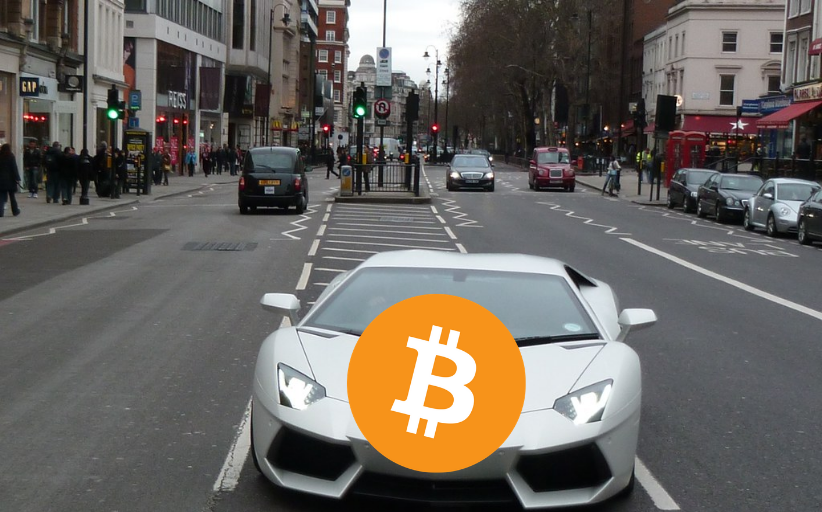
When Lambo? Is a Cryptocurrency slang term that is used when a person is asking, will this Cryptocurrency investment make me enough money to buy the car, Lamborghini? In simple words a person is asking will this cryptocurrency investment make me rich?
The history behind this term is when Crypto millionaires would publicly spend the money, they made from investing in Bitcoin, on Lamborghinis, and buying expensive possessions.
Lightning Network:
Lightning Network is a second-layer technology for Bitcoin, that uses micropayment channels to scale its blockchain’s capability to conduct transactions. By taking transactions away from the main blockchain, the lightning network is expected to decongest Bitcoin and reduce transaction fees.
In simple terms, its purpose is to make Bitcoin transactions faster!
X:
This means how many times the value of a Cryptocurrency has multiplied.
Fee, Gas, and Gwei:
This means the cost it will take for you to send your Cryptocurrency.
Private Presale:
A Private Presale is the first iteration of an ico, where only large investors can participate, this could mean having hundreds and thousands of dollars or even millions, usually only credited investors with a large portfolio, project team members and project advisors are allowed to invest in this stage of the Ico.
Public Presale:
A benefit of this is that you get a bonus because you invested early in the project, here’s an example let’s say you buy a coin and it costs $1 each and you buy $100 worth of the Cryptocurrency, instead of only getting $100 worth you may get $150.
To get this you usually have to be whitelisted by the project, which is mostly done a few weeks earlier, where you sign up saying that you are interested in the Cryptocurrency.
Satoshi:
A Satoshi is a 100th million of a Bitcoin and is usually mentioned when a coin is not worth a lot of fiat money.
Bounties:
These are small tasks that an ICO project will give money for, examples of this can be, someone reviewing the project, translation help, promoting the project and GFX designs, and many more.
Bit:
A bit is mostly used to choose a sub-unit of a Bitcoin, 1,000,000 bits is equal to 1 Bitcoin (BTC). This unit is usually more convenient for pricing tips, goods, and services.
Lagger:
A Lagger is a Cryptocurrency that does not go above 200%, 50% is classed as disappointing.
F.O.G.S:
This means the “Fear Of Getting Slaughtered”, this is a feeling people get when the price of a Cryptocurrency (Or any asset) is high, and you want to buy in, but you fear that the time you do the price will rapidly drop.
Minnow:
A Minnow is used for people that have a small number of Cryptocurrencies.
Bubble:
This is defined when a market is overbought, which is usually followed by a crash.
Cloud Mining:

Cloud Mining is when an organization will offer its equipment from a different location to use for mining. They offer services where customers purchase contracts that give them a certain amount of power to mine.
Genesis Block:
A Genesis block is the first block inside a blockchain.
Pool:
A pool is when a group of Cryptocurrency miners come together and share each other’s mining resources, this is done so they can mine more Bitcoin at a faster rate.
Volume (24h):
Volume (24h) Is the amount of money that has moved in and out of a coin/token or exchange in a 24-hour period.
HOLY MOLY!!!
This has been the longest blog post I have ever made! I really hope that you got lots of useful information, that will boot you right up to speed with all the Cryptocurrency words and phrases.
All I ask of you is to share this blog post with other cryptocurrency lovers, Why?
Because there are too many people who are struggling to find everything they need to know about Cryptocurrency. I had to go through the same issue too, I would scramble the internet trying to find all the phrases and definitions for Cryptocurrency.
And just when I thought I discovered A “Full beginners glossary to Cryptocurrency” there would be a million different definitions I still hadn’t discovered yet. This made me tired, annoyed, and overwhelmed.
I know that it’s easier to simply click off, or bookmark this blog for yourself, but I want you to picture this.
How would you feel if everyone had that same mentality? Would you be able to learn anything? How would you become successful in anything if everyone was selfish and only helped themselves?
It would be pretty difficult, right? Perhaps even impossible.
I’m not asking you to give me your kidney, all I’m simply asking is that you share this blog post with other people, that you like and support… Is that okay with you?
1 . If all this blog post did was give you 1 “AH HA” moment (Or multiple) would that be worth a share?
2 . If all this blog post did was give you the confidence to speak with other Cryptocurrency fans, and never have people look at you as an uneducated noob would that be worth a share?
3 . If all this blog post did was give the crucial knowledge to invest with intelligence and clarity would that be worth a share?
4 . And lastly, if all this blog post did was stop you from digging through the internet for hours trying to find these Cryptocurrency phrases and definitions, would that be worth a share?
Once again thank you for taking the time to read this, it means a lot to me, take care, and remember “Greatness Is Within”.
https://adventago.com/【stop】this-7137-word-crypto-library-has-all-you-need-financial-education/
bitcoin for beginners uk, bitcoin for beginners reddit, bitcoin for beginners quora, bitcoin for beginners, crypto for beginners, crypto for beginners reddit, crypto for beginners quora, cryptocurrency for beginners, cryptocurrency for beginners reddit, cryptocurrency for beginners quora, bitcoin for dummies, crypto for dummies , cryptocurrency for dummies, bitcoin ,BTC ,cryptocurrency ,satoshi nakamoto ,bitcoin wallet ,bitcoin trader ,altcoin trader ,buy bitcoin ,bitcoin atm near me ,bitcoin Reddit ,Facebook cryptocurrency ,Reddit cryptocurrency ,buy bitcoin with credit card ,bitcoin investment ,crypto ,digital asset ,digital currency ,virtual currency ,currencies ,cryptocurrency exchange, blockchain ,bitcoin trading ,coin markets ,crypto trader ,bitcoin investment ,cryptocurrency trading ,best cryptocurrency ,crypto exchanges, Ethereum


May I reference some of this on my page if I post a link back to this page? http://www.piano.m106.com
sure 🙂
Thank you for letting me know
Stubbmled accross your blog and decided to have a very quick study, not what I usually do, but I found this blog excellent. Great to see a web site that has great content, and actually makes some sense. Anyway, great write up.
Thank you I try to be different from the other bloggers by getting straight to the point have an amazing day from Adventago 🙂
How is it that just anybody can publish a weblog and get as popular as this? Its not like youve said something extremely impressive more like youve painted a quite picture through an issue that you know nothing about! I dont want to sound mean, here. But do you definitely think that you can get away with adding some quite pictures and not truly say something?
no, I definitely can’t
that’s why I make sure to do a lot of research and talk about my own success
So I can paint a good picture that others can sue to succeed
It’s kind of weird how you say this
Yet others love what I do and comment how helpful it is
Hmmm… maybe it’s just down to your own perception
Do you by any chance have a top posters page to honour your best blog commenters?
No, I’m not sure where I would put that on my blog
Do other websites do that too?
Thank for the suggestion
I have desired to write something like this on my webpage and this has given me a concept. Cheers.
Youre so cool! I dont suppose Ive read something like this before. So good to find any person with some unique ideas on this subject. realy thank you for starting this up. this website is something thats needed on the web, somebody with a little bit originality. helpful job for bringing something new to the internet!
This weblog seems to get a great deal of site visitors. How do you promote it? It gives a nice individual twist on things. I guess getting something useful or substantial to post about is the most important factor.
My brother suggested I might like this web site. He was totally right. This post actually made my day. You can not imagine just how much time I had spent for this information! Thanks!